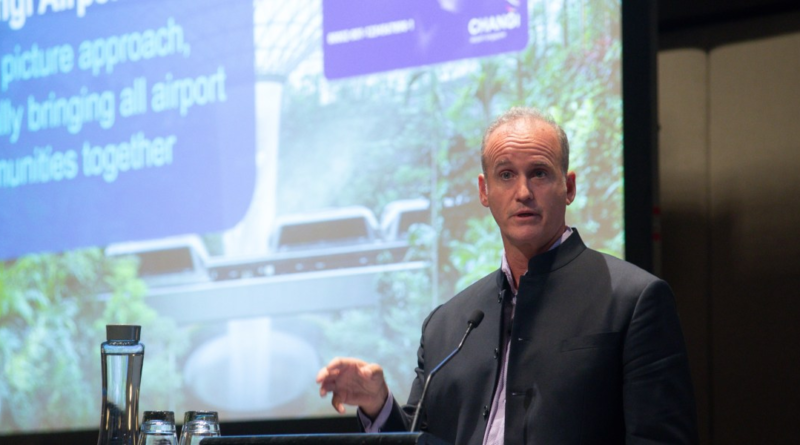Asian millennials and Gen Z, with their 'hyper heightened' focus on experiences, are changing the region's travel market
Gen Z and millennial tourists will make up half of all travelers in the Asia-Pacific region, the fastest growing region for travel, by 2025, says Todd Handcock, the global chief commercial officer and Asia-Pacific head for Collinson, which operates the Priority Pass airport lounges.
But this new generation of tourists wants something else from their travel. These two groups have a “hyper heightened focus on personalized value-added experiences,” according to Collinson’s customer engagement report. Younger travelers are thus more likely to value benefits such as spas or sleeping pods at the airport, treating time spent waiting for flights as part of the overall travel experience.
According to a Collinson survey in September, cashback and points remained the most popular financial rewards for Gen X travelers while Gen Z and millennials showed a preference for experiential-driven travel rewards.
Other industry research suggest Gen Z and millennial travelers are more likely to favor nature-based or cultural experiences when traveling. Travelers from these two cohorts are also more likely to be influenced by social media as opposed to search engines or travel guides.
By comparison, Gen X travelers travel less frequently and are more willing to pay for luxury, according to industry research. These tourists may also be traveling with family, and so may look for family-friendly options or activities that are suitable for children.
Collinson runs over 1,500 airport lounges and travel experiences in 600 different cities, and partners with banks, airlines and hotels to offer consumers access. “If you take a look at our geographic coverage, we have probably more insight than any other airline and hotel group, bar [Marriott] Bonvoy,” Handcock says.
Passengers trying to enter Collinson lounges need to submit their boarding passes and a membership card, giving the company information on where people are going, how old they are, and how they became a Priority Pass member. (Handcock says the company is “tight on privacy rules and very protective of our clients’ data.”)
Air travel in the Asia Pacific is largely back to pre-pandemic levels, he says, based on a 17% increase in lounge visits, driven by millennials and Gen Z, for the current quarter compared to the same period in 2019.
India and China
India and China are Collinson’s “significant markets,” Handcock says.
China has lagged behind the rest of Asia when it comes to international air travel recovery. Fewer flight options, which may also result in higher prices, coupled with visa backlogs and restrictions have often been cited by the travel industry as possible reasons for the slower rebound. (Domestic travel, on the other hand has surpassed pre-COVID levels, with industry figures not seeing a slowdown)
Yet data from the recent Lunar New Year holiday suggest that new visa-free initiatives from nearby countries like Singapore, Malaysia and Thailand could be encouraging Chinese tourists to travel internationally again. China saw some 13.52 million inbound and outbound trips during the holiday, which is 2.8 times more from the same holiday period last year, according to the National Immigration Administration. Fliggy, a travel platform owned by Alibaba, noted that outbound travel hit a four-year high.
Handcock notes that Collinson is starting to see more inbound travel to China as well, suggesting that international travelers are now more confident to visit China. Beijing, for its part, has been trying to make it easier for people outside of China to visit. It unilaterally granted citizens from Thailand, Malaysia, and 11 different European countries visa-free access to the country,
“China has not fully recovered but we’re seeing significant growth both from a domestic as well as an inbound perspective,” Handcock said.
Handcock is more effusive on India’s potential, citing government policy, a rising middle-class, and Collinson data pointing to a burgeoning air travel sector.
“Our 2023 lounge visit data has seen a 56% year-on-year increase in outbound traffic from India,” Handcock says. India is expected to have about 5 billion aggregate trips annually by 2030, and travel expenditure is expected to grow to $410 billion by 2030, according to a study released by Booking.com and McKinsey & Company in October.
The top destinations for outbound India travel, based on Collinson’s data, are the United Arab Emirates, Thailand, Vietnam, Malaysia, and Indonesia.
The Indian government is encouraging more investment in its aviation industry, with the Modi administration saying that the government would spend 980 billion Indian rupees ($11.83 billion) by 2025 to build new airports and modernize existing ones.
Indian carriers are also expanding their fleets. The newly-privatized Air India ordered 470 planes from Boeing and Airbus in February 2023. Also last year, Indian airline IndiGo ordered 500 Airbus planes at the Paris Airshow, the largest single purchase agreement by any airline in commercial aviation history.
Fortune is hosting the inaugural Fortune Innovation Forum in Hong Kong on March 27–28. Experts, investors, and leaders of the world’s largest companies will come together to discuss “New Strategies for Growth,” or how companies can best seize opportunities in a fast-changing world.




